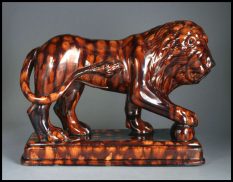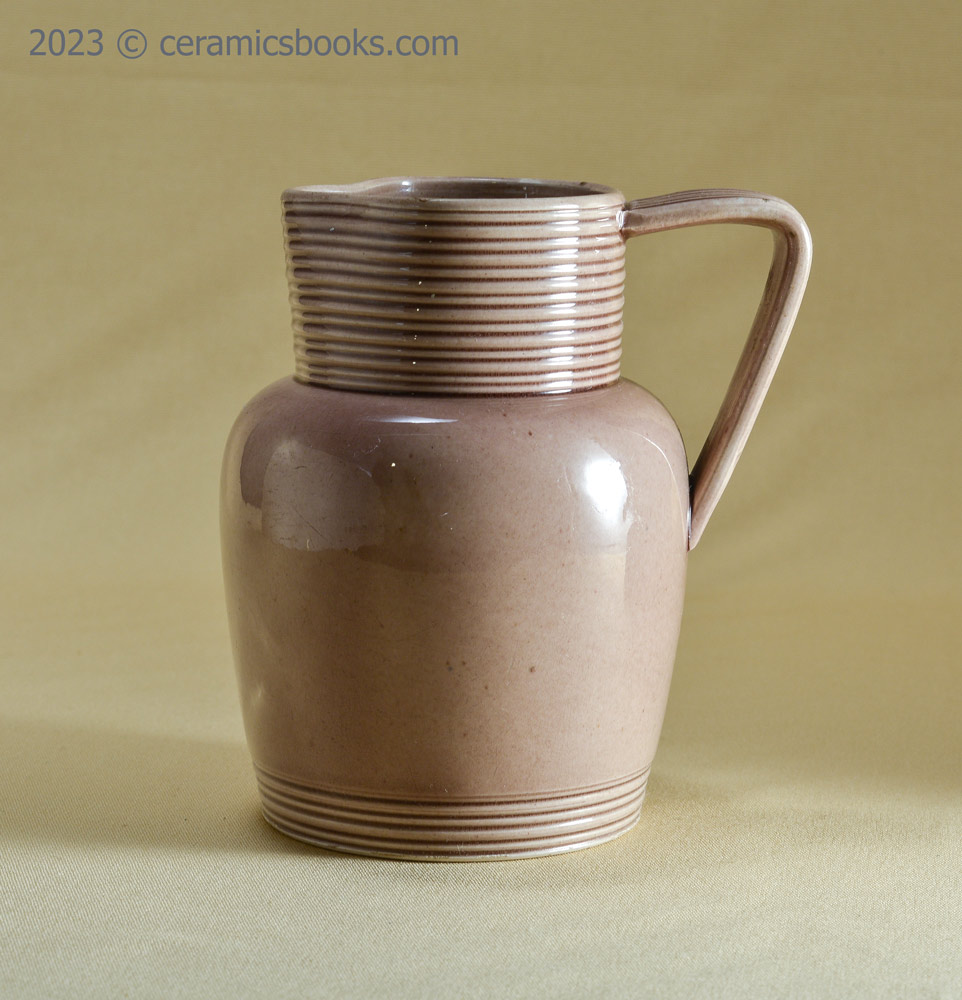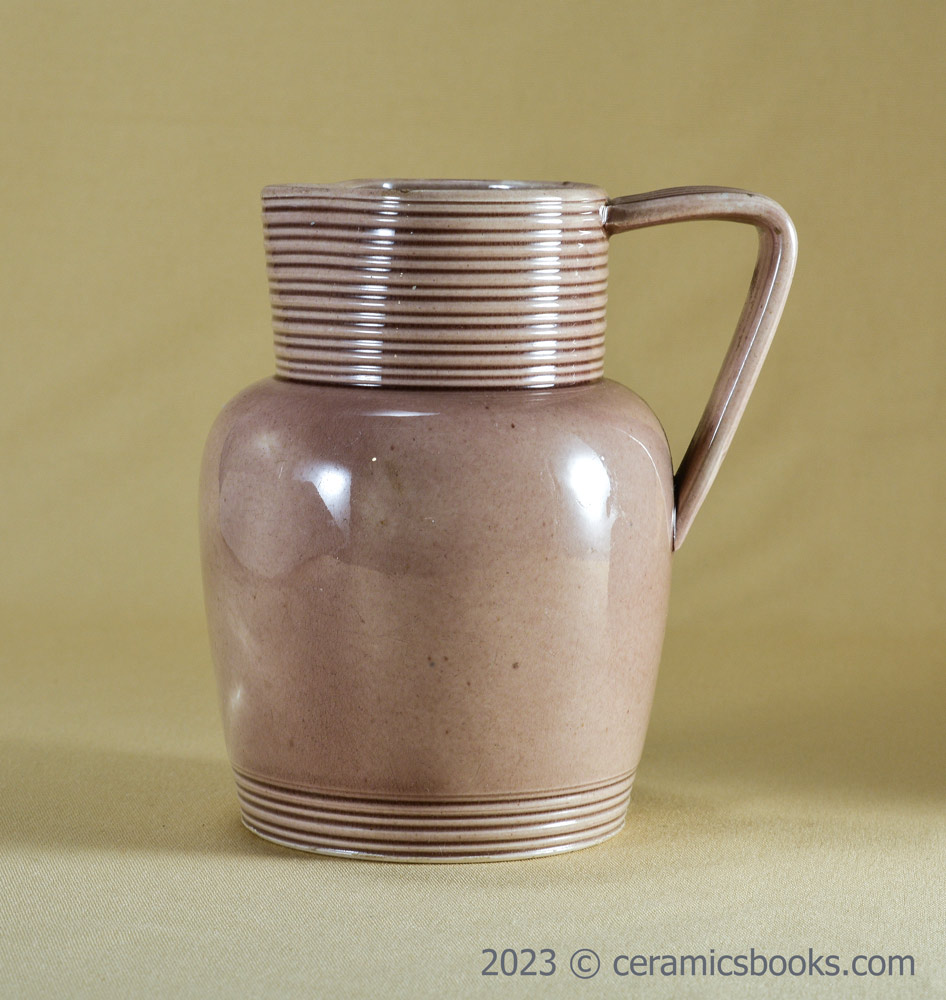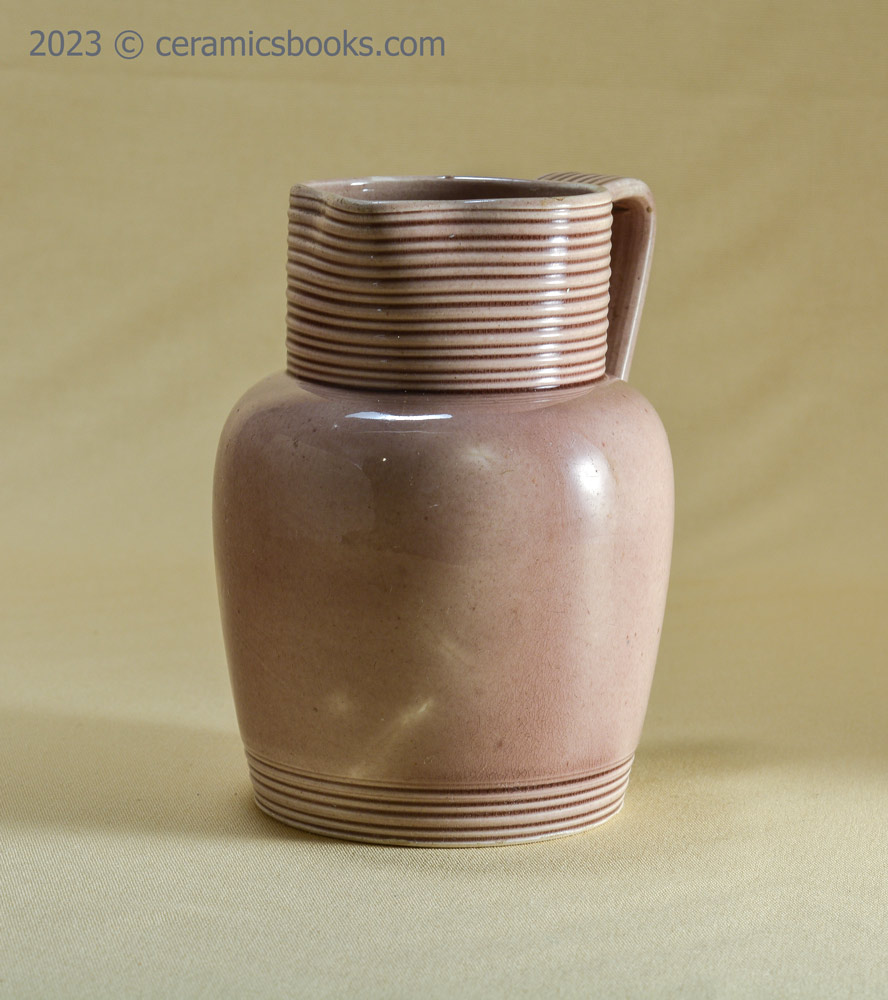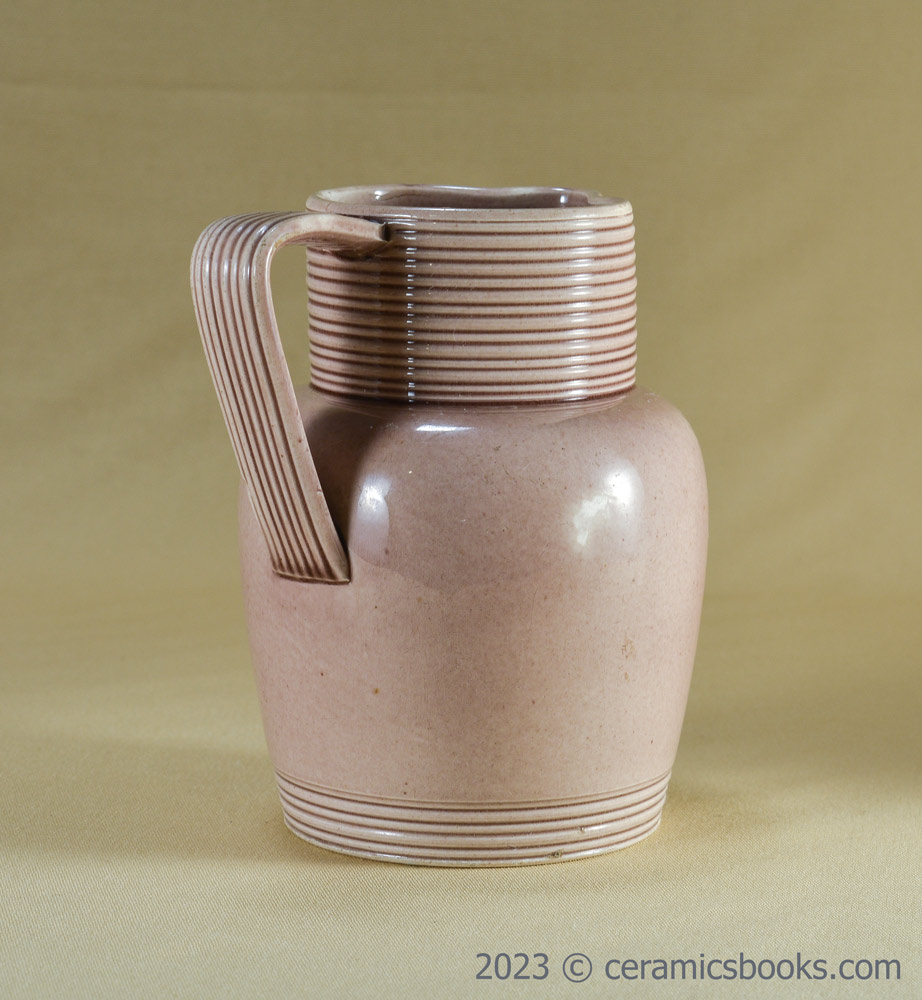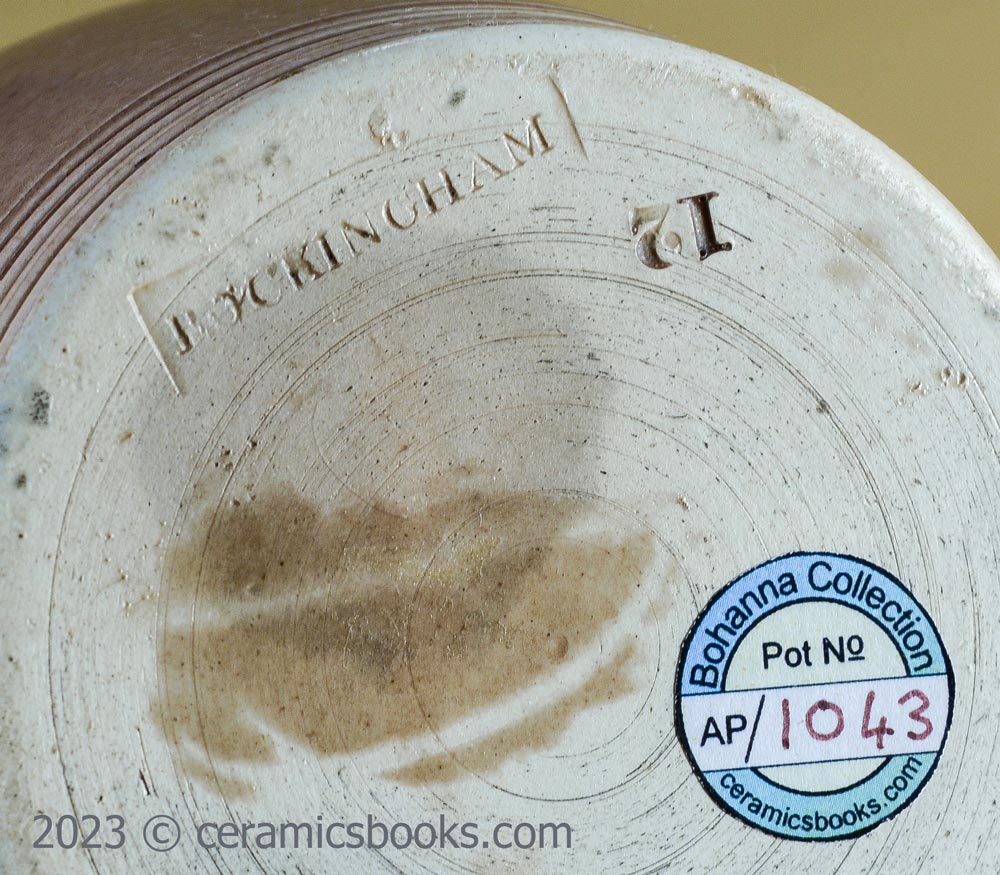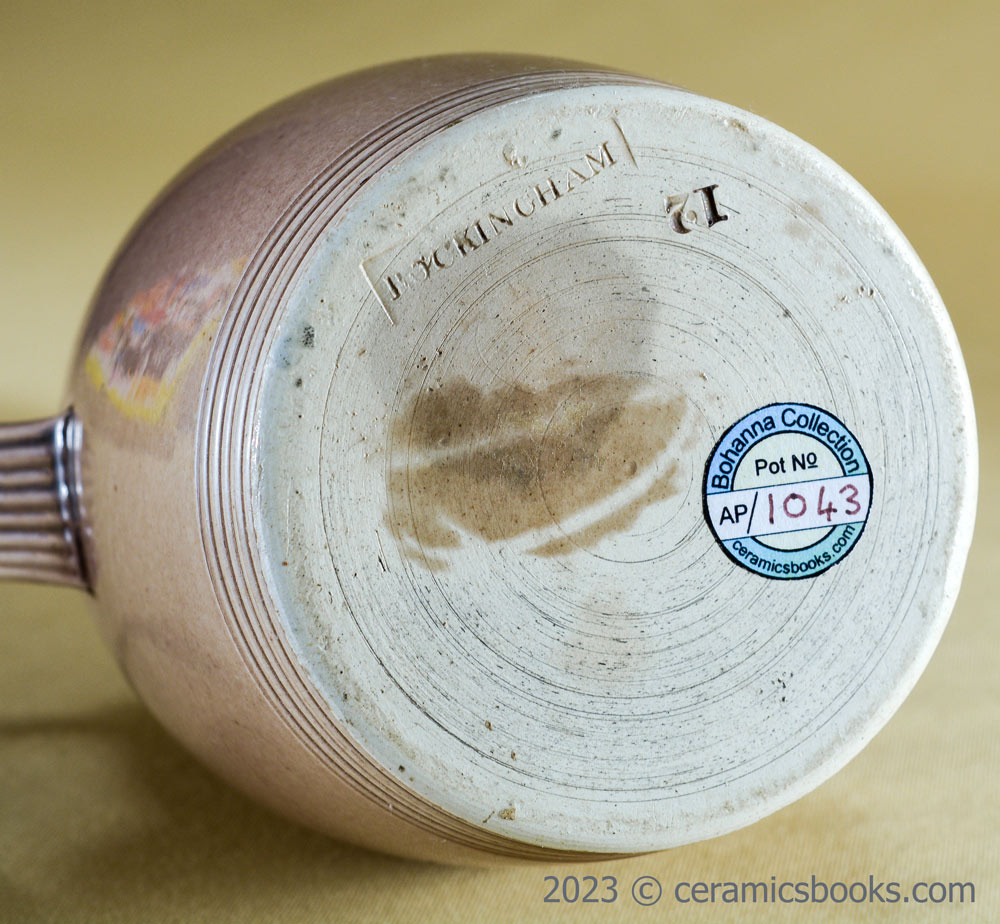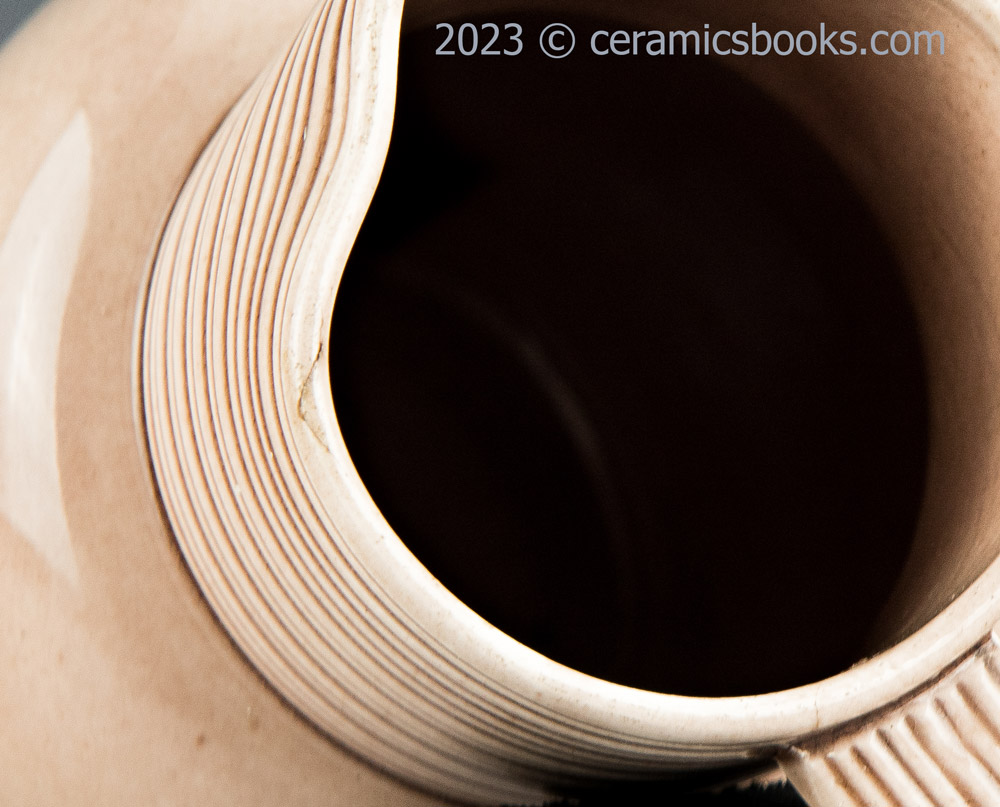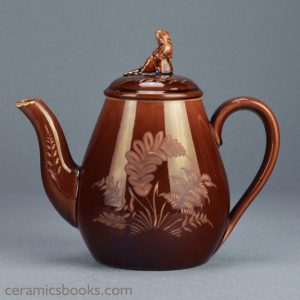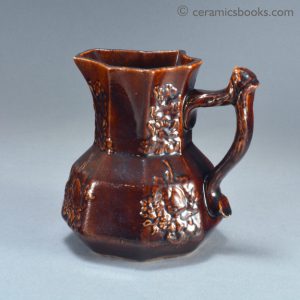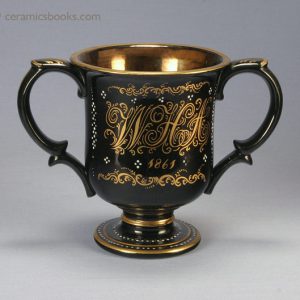An earthenware jug with a pale purple glaze. The jug is wheel-thrown and the neck and foot have turned ribbing. The spout is absolutely minimal, having been formed by slightly distorting (‘pulling’) the soft clay into shape straight after throwing. The handle is extruded with fluting and shaped by foldinging into a ‘7’ shape, and lacks terminals. The base is flat and mostly unglazed. This particular form of treacleware (Rockingham glaze) is created with a glaze which is higher in manganese dioxide and very low in iron oxide, which is the opposite of normal treacleware which has a high iron and low manganese content. The base has impressed marks “ROCKINGHAM” and “12”. But the mark does not refer to a maker; rather it represents the name given by many potters to brown glazed earthenware in the C19th. This was due to the Swinton Pottery naming it’s own particular brown glazed wares “Rockingham” in honour of their landlord and patron, the Earl of Rockingham, and their success with selling it to the aristocracy.
This unusual form of treacleware is discussed in The English Ceramic Circle Transactions 1993 Vol 15 part 1, p.46 etc., where the glaze has been analysed and compared to standard treacleware and was found to have been a group of its own. No maker was identified.
My own research into treacleware, which has included collecting many hundreds of examples to compare and study, has led me to believe that these pale manganese wares may well be French in origin, rather than British.
Pot ID: AP/1043
Dimensions: 129mm high.
Net Weight (grams): 310
Date: c.1830-1850.
Condition Report:
Has a few small patches on body where glaze is thin or has missed (a manufacturing issue rather than damage). There is also a tiny internal ‘C’ type hairline within the top edge of the rim. Virtually perfect.
